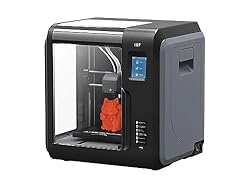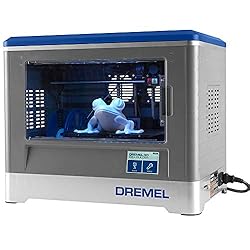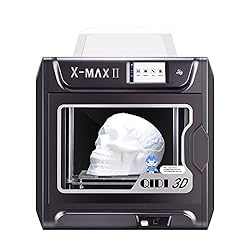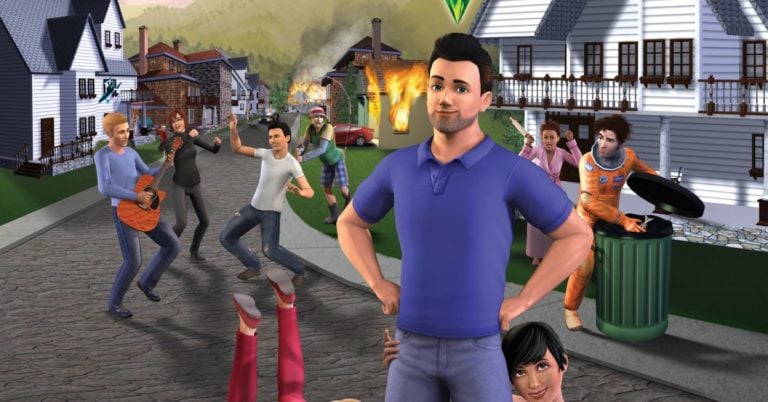The Best 3D Printer for SolidWorks | Best Picks + Buyers Guide
3D printing is becoming more and more popular as time has gone on. With the price of 3D printers and the materials needed for their use becoming cheaper, it’s made it a lot easier for people to try their hand at making some models. Printing itself is really cool and it allows you to make all sorts of creations and tools. Whether it be the next miniature that you want to use in your next D&D campaign or a neat little plastic clip. 3D printing allows you to do practically anything. Let’s get started with our Best 3D Printer for SolidWorks Guide.




Table of Contents
Best 3D Printer for SolidWorks Guide
Though with the amount of choice out there it can be pretty daunting. Not to mention how to actually get the printing process started with what materials you need and the software you have to use. This is why we’ve put this list together of some of the best 3D printers you can get, which all work with a very popular piece of CAD software. SolidWorks is one of the most popular and most used 3D modelers used by both professionals and aspiring printers, so either way, we’ve got you covered! Let’s jump into our list for ‘The Best 3D printer for SolidWorks’.
SUNLU 3D Printer
- Resolution – 50 – 300 Microns
- Volume – 12.2” x 12.2” x 15.7”
- Weight – 8lbs (Shipping Weight)
- Connections – USB, SD Card
Our first printer on this list is an excellent starting point for anyone who has not yet entered the world of 3D printing. This SUNLU printer offers a lot of high-quality performance for an entry-level printer and is great for the inexperienced. This Sunlu printer offers a very sleek looking piece of equipment. With an all-black frame which is complemented by the white building plate. The plate in question has a build size of 12.2” x 12.2” x 15.7”, so you’ll be able to build some pretty decent-sized models here. The setup process is fortunately not that complicated, though it may seem daunting to those who are new to the 3D printing world.
Though beginners should be careful as this type of printer doesn’t have any doors or housing to protect the prints while they’re being printed. It’s completely open-faced which allows you to see the entirety of the process but obviously can be pretty dangerous in some circumstances. When it comes to the prints themselves, this printer creates very highly detailed models which are great for almost anything you build.
Some other cool features that this printer has are its connections for both USB and SD cards. Allowing you to use whatever storage device is more convenient to you. The small screen located on the front of the machine is informative but don’t expect anything too fancy like a touchscreen. The biggest benefit that this machine has, especially for beginners in printing, is its ability to continue printing even if there’s been a power cut. Allowing the process to continue right where it left off. This printer is a fantastic choice for beginners and even those who are experienced in the world of 3D printing.
Pros:
- Great Build Quality
- Large Build Volume
- USB & SD Card Slots
Cons:
- Not Enclosed
- Requires Some Assembly
Monoprice Voxel 3D Printer
- Resolution – 100-400 Microns
- Volume – 5.9” x 5.9” x 5.9”
- Weight – 5lbs
- Connections – USB, Wi-Fi
Our next entry on this list offers a pretty different printing experience. This is the printer for those who don’t need massive building spaces and prefer a lighter printer. This Monoprice printer does exactly those things, by combining the functionality of an FDM printer in a small and enclosed unit. The printer in question is small and reasonably lightweight, with a grey and black body. It has a door panel on the front that opens to let you place things inside the printer and view the printing process. As well as transparent panels on the top and left-hand side. The build area on this printer spans 5.9” x 5.9” x 5.9”, so it’s a fairly small square area.
The volume isn’t the biggest and it might limit you based on what exactly you want to build. If you plan on making miniatures or smaller tool bits and toys then this will do fine. But if you’re thinking any bigger than that, you’d best look elsewhere on this list. But in terms of build quality, you’re getting a fantastic printer here. It produces highly detailed and sharp models that will consistently look great and perform well.
The 2.8” screen on the front of the printer is where you’ll be controlling all of its functions and it does exactly what it needs to do. It’s a touchscreen with a crisp display, though it is a little small. So if you have particularly big hands you might get a little annoyed at it. Another great part of the printer is the built-in camera on the inside that allows you to view the printing process as it’s happening.
Pros:
- Great build quality
- Good built-in camera
- Accessible Design
Cons:
- Small touchscreen display
Dremel Digilab
- Resolution – 100 Microns
- Volume – 0” x 5.9” x 5.5”
- Weight – 15.43lbs
- Connections – USB, SD Card, Wi-Fi
Our next option on this offers a lot of what made our last option great, with a few extra positives here too. This Dremel Digilab 3D FDM printer is another great option for both beginners and experienced printers alike. The unit itself consists of a white and grey metal box with a blue lid. The blue lid can be removed to allow access into the mechanisms of the printer and there’s a door on the front to access the build plate.
This printer is designed to be a lot lighter and more compact than a lot of other printers of its type which is why it only weighs 15.43lbs. It’s a great option for those who want a printer that’s a lot lighter than bigger and heftier models. Though with the size does come with a suitably smaller build volume of 9.0” x 5.9” x 5.5”. So you won’t be building anything that’s too big.
Visually this printer has a sort of retro aesthetic that is reminiscent of old printers, which helps it stand out. Though with this aesthetic comes a few issues. The rather simple design means that the viewing angles of the printer are severely limited, allowing you to only view the print from the front door panel. This is annoying if you’re someone who likes to watch and keep an eye on the process. This printer also has a touchscreen, though it is a bit on the small side so that may or may not be an issue for you. Overall this is another fantastic printer and it’s especially great for those who want something that is smaller and more manageable to transport.
Pros:
- Small Form Factor
- High Print Quality
- Easy Setup
Cons:
- Small Touchscreen
- Lack of Viewing Angles
FlashForge 3D Printer
- Resolution – 100 – 500 Microns
- Volume – 9” x 5.8” x 5.9”
- Weight – 24.3lbs
- Connections – USB, SD Card
The next entry on this list is going to appeal to those who have a little more experience with 3D printing and want something that’s going to perform well. This FlashForge 3D FDM printer offers a lot right out of the gate. The unit in question is an enclosed unit in a black metal frame. Which looks very stylish along with the general aesthetics of the printer.
On top of the printer is a transparent plastic lid that protects and encloses a lot of the vital parts of the machine and allows you to access its insides. With the main access being the plastic panel on the front of the printer. This printer is fairly light weighing in at 24.3lbs, meaning it shouldn’t be too much trouble to transport and move around.
The build volume on this printer is 8.9” x 5.8” x 5.9”, which is the perfect size for making miniatures, tools, and toys. If you want something that is going to make large-scale models for you this isn’t the one. But the main thing that this printer offers is very high-quality printing in a very easy and accessible way. It requires little to no assembly apart from placing your filament and as soon as that’s done, you’re ready to go. A few other nice touches are the inclusion of both USB and SD card ports.
As well as a control display which is clear and easy to read, though it isn’t a touchscreen which might disappoint some. It also suffers from poor viewing angles as the only way to actually view the printing process is through the front panel. Ultimately this is another fantastic printer that performs to a high standard and doesn’t mess around with any complicated assembly.
Pros:
- Small Form Factor
- High Print Quality
- Easy Setup
Cons:
- Lack of Touchscreen
- Lack of Viewing Angles
QIDI TECH 3D Printer
- Resolution – 50 – 400 Microns
- Volume – 8″ x 9.8″ x 11.8″
- Weight – 61.7lbs
- Connections – USB
Our final entry on this list is for those who are experienced with printing and want to take their prints to the next level. For these purposes, we’ve chosen this QIDI TECH 3D printer due to its performance and quality on the higher end of 3D printing. With this printer, you’re getting an enclosed unit with a black body that both looks stylish and offers a lot of protection for the parts inside. The access points on this printer are few but they get the job done. One lies on top of the printer for access to all the moving parts and the other is on the front which acts as the main access for your prints.
This printer unfortunately has pretty poor viewing angles which might be annoying for those who like to watch the process. Though the main downside here is the weight of the printer, which comes in at 61.7lbs, which might make it pretty difficult to transport and move around.
Though that weight means that this machine is able to build a whole lot more. With a build volume of 11.8″ x 9.8″ x 11.8″, meaning that you can make some pretty big builds. Making this the perfect machine for those who want to make prints that are both big and small. Fortunately, the build quality on offer here is also fantastic. With this printer, your builds are going to be highly detailed and more importantly, consistent. Other bonuses with this machine include the large and clear touchscreen on the front of the printer. As well as the overall fantastic build quality of the printer itself. This is an amazing option for those who are experienced with 3D printing or those who want to upgrade their printing arsenal.
Pros:
- Large Touchscreen
- High Print Quality
- Easy Setup
Cons:
- Heavy
- Lack of Viewing Angles
Buying Guide
If you’ve gotten this far in the list and you still have no clue about what printer you want to get if you don’t know where to begin with 3D printing, we’ve got you covered. In this section you’ll find some advice and information about 3D printing.
How to use SolidWorks
SolidWorks is one of the most popular pieces of software when it comes to 3D printing. It acts as a CAD modelling system that lets you draw out and model the prints you want to make. You then save these files as STL files and can place them into your printer to begin the printing process. It’s a fairly simple and easy system that is universal across most CAD software. So even if you decide to not use SolidWorks for whatever reason, they all work fundamentally the same. Though the main benefit that you get with SolidWorks is a professional grade modelling suite
SolidWorks is software that is supported on Windows, but not officially on Mac. Which isn’t saying you can’t use it on Mac, it just means that it isn’t officially supported and you might need to look for other ways to get it to work. But for a Windows PC, you’re going to need at least a decent PC with the following hardware:
- Windows 10
- 16GB RAM (minimum)
Or
- 32GB RAM (recommended)
- At least 20GB of free space on a hard drive or SSD
- 4GB VRAM
These requirements aren’t exactly the most taxing in the world, but it does mean that you’ll need a semi-competent PC. So you won’t really be able to use this software on machines that are older than Windows 10 (though you can get builds for Windows 7 and 8). Lastly, this software has a free trial version that allows you to see what the suite has to offer, but after that you’ll need to pay. So bear these things in mind when you decide to either upgrade your pc to meet these requirements, or when using this software in general.
Buy the printer that’s right for you
Now this probably sounds pretty obvious, but it’s a statement that still stands. You shouldn’t feel like you need to overspend on hardware that you don’t need and don’t plan to use to its full capabilities. Aim to get a printer that does exactly what you need it to. For instance, if you want to print miniatures and small toys, you won’t be needing a professional grade printer.
Ultimately the advice here is to be smart with your purchase. If you are someone who likes to spend a lot on their tech and wants to prepare for making more complex prints, you should still pay attention to what you’re getting. Bear in mind what you want to actually make and remember that you can always upgrade when you feel like you want to make bigger and better things.
Buying Tips
- Pay attention to the type of printer you’re getting. Make sure you know the difference between filament (FDM) and resin (SLA) printers. As the experiences you’ll have with both of these will be wildly different.
- Some printers use their own proprietary types of filament and others are able to use almost any kind of filament. Make sure to check which your chosen printer supports so that you can always find the cheapest deals on printing materials.
- If you already own a printer and are looking to upgrade, make sure that the experience with the new printer is going to be a better one. Often you can find a printer that seems to be better, but due to the resolution or the quality of the printer itself, you might find it offers a worse experience.
Verdict
We’ve come to the end of our list for ‘The Best 3D printer for SolidWorks in 2020’. If it helped you at all and kickstarted your journey into 3D printing, let us know down in the comments!











